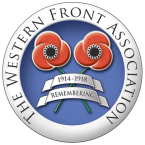3rd (Reserve) Battalion, Northamptonshire Regiment

Frederick William Hicks was born in Cheltenham in the second quarter of 1899, the son of Raymond William and Edith Hicks, who also had a younger daughter, Doris. In the 1901 Census Raymond Hicks’ occupation was shown as a ‘Hackney Carman’ and the family lived at 1 Brunswick Square, Gloucester. Ten years later the Census showed them as living at 46 Tewkesbury Road, Cheltenham, where Raymond showed his occupation as ‘fish shop’. Raymond Hicks died in the summer of 1911 and in 1913 his widow, Edith, re-married to John Henry Sheen (an insurance agent), whose wife, Elizabeth had died in the Spring of 1912. The couple went to live at 12 Brunswick Square, Gloucester.
Frederick enlisted in the Army on 7 September 1914. On his Attestation papers he quoted his age as 19, when, in fact he was not yet 16. The minimum age for enlistment was 18, with overseas service not permitted until 19, however, in the febrile atmosphere of recruitment in the early weeks of the war, many a recruiting officer chose not to challenge a recruit’s age, provided they ‘looked the part’. He gave his occupation as a ‘turner’. His posting was to the Gloucestershire Regiment and the 9th Battalion (number 12501) and after spending just over year training, at Cheltenham and Lonbridge Deverill, in Wiltshire, the battalion joined the British Expeditionary Force (BEF) in France on 29 September 1915.
No record of Frederick’s service has survived, other than some papers relating to Army Pensions, which are copies of what would have been in his Service record. These show that he stayed with BEF until 25 February 1916. In November 1915 the 9th Glosters transferred to the Salonika Front but there is no indication in these papers that Frederick went with them. If he did not transfer there is no hint as to which unit he was with past this date until his return to the UK on 25 February 1916. He was based in the UK, at the Glosters depot, from 26 February to 10 March 1916, when he was discharged from the Army ‘having made a mis-statement as to age on enlistment’. Somehow the authorities had discovered his true age.
His eighteenth birthday would have come in the first half of 1917 and it would appear that he was then called up for service and this time ended up in the 3rd (Reserve) Battalion of the Northamptonshire Regiment. He would not have been eligible for overseas service until sometime in early 1918. Army Records contain two Medal Index Cards for him, cross-referenced for his service in the Glosters and Northamptonshires: the card for the latter does not contain any details regarding overseas service. The 3rd Battalion of the Northamptonshires were based in Kent for most of the war and from May 1918 until past the Armistice we located at Scrapsgate on the Isle of Sheppey.
Frederick died, of pneumonia, on 27 November 1918, aged 19. It would appear likely that this was at the camp in Kent and possibly he was a victim of the influenza pandemic of the time. He was buried in Cheltenham Cemetery, where he has a CWGC headstone and is commemorated on the Cheltenham War Memorial.
Researched by Graham Adams 25 January 2013 (revised 27 July 2021)
